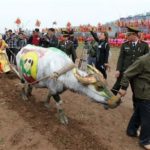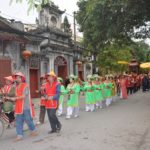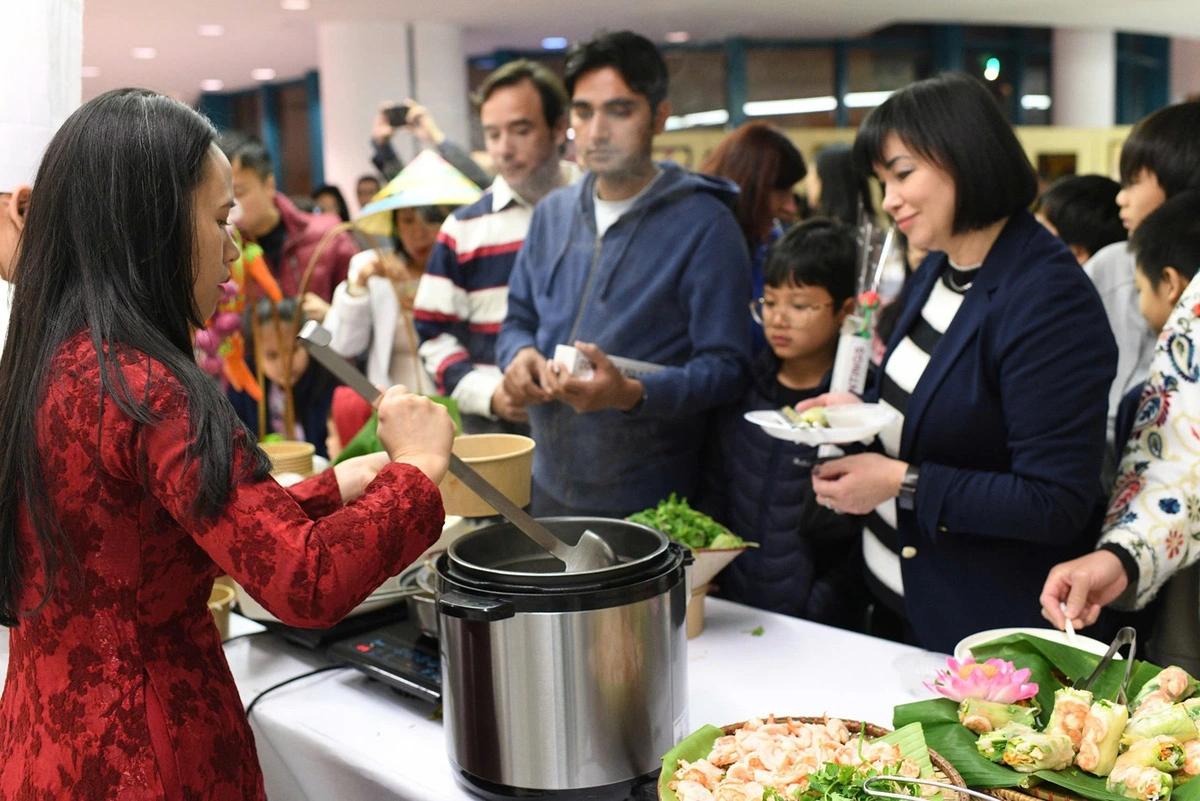Street vendor Le Thi Hoa was overcome with emotion when she stood for a long time in front of her photo displayed at the exhibition, Where I Arrive. Her story was powerfully depicted in the image, stirring up a deep sense of nostalgia.
The Vietnamese Women’s Museum is hosting an exhibition showcasing the stories of a group of female migrant workers in Hanoi. This unique display provides insight into the lives and experiences of these women as they navigate an unfamiliar city and its culture. Visitors will gain an understanding of the daily struggles and triumphs of this community, as well as the ways in which their stories are intertwined with the larger narrative of the city. Through this exhibition, the museum hopes to raise awareness of the plight of female migrant workers and to encourage the public to think about the ways in which they can support them.
Stories to be Heard: Hear the stories that have been untold, the stories that have been shared, and the stories that have shaped our lives. From tales of courage and resilience to stories of joy and sorrow, explore the unique stories that have been passed down through generations. Discover the power of stories to bring us together and to inform our understanding of the world around us. Let us never forget that the stories we tell shape our lives, our communities, and our future.
For the exhibition, the museum staff conducted interviews with 20 female migrant workers aged between 16 and 34 from a variety of occupations, including waitresses, hairdressers, salespersons, chefs, waste collectors, and street vendors in the capital city. These women had traveled from provinces such as Son La, Cao Bang, Phu Tho, Hung Yen, Hai Phong, Nam Dinh, Thanh Hoa, Nghe An, and Ha Tinh, seeking to improve their lives.
| Le Thi Hoa and guests at the exhibition. Photo courtesy of the museum. |
Museum director Nguyen Thi Tuyet told The Hanoi Times that migration is an inevitable trend, a positive driving force for socio-economic development, and a source of labor for every nation’s economy. She further stated that it is a key factor that drives the growth and progress of society.
They come from different parts of the country, but they all share one thing in common: they are all facing difficult times in the city. We wanted to explore the various barriers and challenges they have faced, especially when it comes to using public spaces. How have they been able to adjust to the lifestyle and the community in the city? What do they hope to get out of it?
The answers to these questions are uncovered within the narratives of female migrant workers presented in the exhibition, which includes photographs, short films, and firsthand accounts.
The exhibition is carefully divided into three sections, each of which examines the experiences of female migrant workers as they leave their rural homes to seek employment and confront the challenges of daily life. Through a combination of photos, videos, and interactive displays, visitors can gain a deeper understanding of the struggles, sacrifices, and successes of these women. Additionally, the exhibit highlights the importance of solidarity and resilience in the face of adversity. By engaging with the stories of these women, visitors can gain a greater appreciation for their resilience and strength.
Le Thi Hoa, a 31-year-old woman from the central province of Thanh Hoa, has been working as a street vendor in Hanoi for many years. Being the second child in her family of three siblings, Hoa had to leave school in the ninth grade in 2005 in order to move to Hanoi and provide for her family. Despite the long hours of work, which can start as early as 8 am and last until 11 pm, Hoa is able to make an income of roughly VND4 million (US$200) per month.
She was touched when visitors examined the photos, meticulously read her stories, and expressed compassion. She was thankful for the museum’s exhibition, which is hoped to raise people’s understanding of the struggles and aspirations of immigrants.
Whether we live in the city or the countryside, we are all Vietnamese. I hope people can sympathize with and show more respect to street vendors such as us,” she said.
Do Thi Tuoi, 33, a shoeshiner from Thanh Hoa, has been living in Hanoi for 15 years. She rents a 10-square-meter room for her stay and leaves it every day at 6 am, returning home after 6 pm. To supplement her income from polishing shoes, she also takes on part-time jobs, such as house cleaning, which earns her around VND10 million ($450) per month.
Tuoi, a resident of a rural area, wanders through Hanoi’s streets every day, only to be met with discrimination from some of the city dwellers. She hopes that people can have a more understanding perspective on individuals like her who come from rural areas. Her only dream is to earn enough money to provide her children with a better education than she had, and to give them a brighter future. With her husband working away from home, her mother now looks after her children.
| The opening ceremony of the exhibition. Photo courtesy of the museum |
Supporting Migrant Women – We must work together to ensure that migrant women are provided with the resources and support they need. From access to healthcare and education to legal assistance and employment opportunities, there are many ways we can help these brave individuals build a better life. By working together, we can create a more inclusive and supportive society for everyone.
According to the Vietnam Women’s Union, women make up the majority of migrants at 55.5%, with 61.8% of migrants falling in the age range of 20 to 39.
It is clear that migrant women have a critical role to play in the labor force and in the economic development of cities and industrial zones. In terms of job and family life, however, they are faced with more obstacles and challenges than their male counterparts, as Nguyen Thi Minh Huong, Vice President of the Vietnam Women’s Union, noted. Despite these struggles, migrant women are an integral part of the workforce and their contribution is essential for the progress of cities and industrial zones.
Huong expressed her hope that, through this event, the Vietnam Women’s Union would receive valuable input on how to enhance their activities in order to create a safe and secure living and working environment for women.
In recent years, the Vietnam Women’s Union (VWU) has collaborated with other departments to propose policies, programs, and projects to support migrant women, such as: providing childcare support for female migrant workers with children under 36 months; mobilizing social resources to build safe communities; implementing models of safe communities, safe villages, and safe vehicles for women and children; and establishing groups/clubs to attract and engage migrant women.
Huong urged everyone to come together and create favorable conditions for these women to reach their highest potential and get access to services in an equitable manner.
| The exhibition helps people understand more the work of female immigrants. Photo: Ngo Minh |
Ambassador of Canada to Vietnam, Shawn Steil, highly praised the exhibition and research on female immigrants, noting that it provides an excellent opportunity to improve the livability, inclusivity, and friendliness of Vietnamese cities for everyone, especially the most vulnerable and migrants.
He emphasized the importance of raising awareness about the increasing demand for better public spaces in light of Hanoi’s rapid growth. “From our experience in global urban planning, it is essential to increase living space while considering the requirements of the most vulnerable people. In this way, we can make the city livable and meet the requirements of all,” he stated.
The Vietnamese Women’s Museum in Hanoi is hosting an exhibition at 36 Ly Thuong Kiet Street, in the Hoan Kiem District. Don’t miss out on this unique opportunity to explore the wonderful culture of Vietnam!
Tam Chuc Pagoda – Ancient beauty amidst majestic scenery
Covering 5,100 ha, Tam Chuc complex is a perfect combination of ancient beauty and the mighty of the immense mountain.











